by Ocean Robbins: You’re in a soundproof booth, sitting in front of a microphone, wearing headphones…
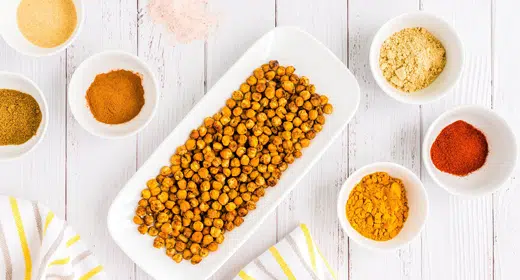
There are cans of Pringles potato chips within reach. No, this isn’t a dystopian sci-fi movie with product placement. Rather, you’re participating in a cutting-edge 2003 study on the perceived crunchiness of potato chips.
All you have to do is open the can and eat the chips, one at a time. As you do so, you tell the researcher if you can perceive any difference in crispness from one chip to another.
You bite, and crunch. Bite, and crunch. And yes, come to think of it, some of the Pringles are considerably fresher and crispier than others. How fascinating!
Here’s something you need to know about Pringles: they’re identical. Formed from a uniform slurry and cooked under strictly controlled conditions, these chips are as close to clones of one another as any entities can be. So there’s no way some of them are fresher or crisper than their fellows. Something else is going on.
What’s going on, you discover months later when you reach into your mailbox for volume 19 issue 5 of the Journal of Sensory Studies, is that the researchers were messing with you by adjusting the volume of your headset, which was broadcasting the sound from the microphone in front of your chip-eating mouth. The lower they turned the volume, the soggier and staler the chips seemed to be. The higher the volume, the crunchier and fresher. And the crunchier you thought the chips were, it turns out, the more you wanted to eat.
A Preference for Crunch
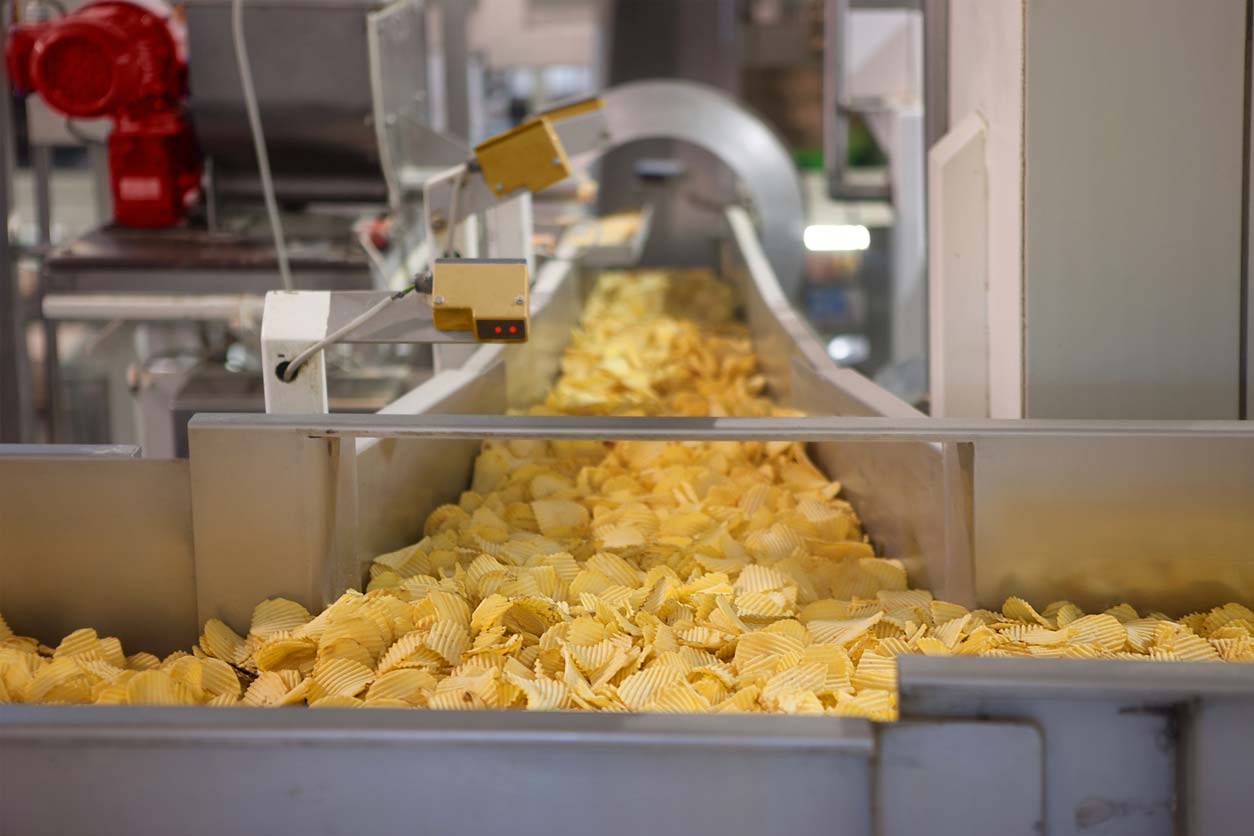
Food manufacturers and marketers have known about the importance of crunchiness for consumer pleasure — and addictiveness — for decades. In the 1960s, Lay’s potato chips slogan was, “Bet you can’t eat just one.” And they almost always won that bet.
Even lab rats prefer crunchy potato chips to the standard rat chow scientifically formulated to meet their every nutritional need. Like us, rodents can get addicted to the sensation of chomping on something crispy, leading to what the German food chemistry researchers alliteratively termed “hedonic hyperphagia,” or what you and I might call “stuffing our faces.”
This stuff has huge economic consequences for the food industry, too. So much so that in the 1980s, Frito Lay was spending upwards of $30 million a year on research into food palatability at its Dallas, Texas facility. That included a $40,000 machine that simulated the human mouth and provided a definitive answer to the question, “What is the ideal breakpoint, in pounds of pressure per square inch, for a potato chip?” (According to Michael Moss, author of Salt Sugar Fat: How the Food Giants Hooked Us, it’s four pounds.)
My Potato Chip Story
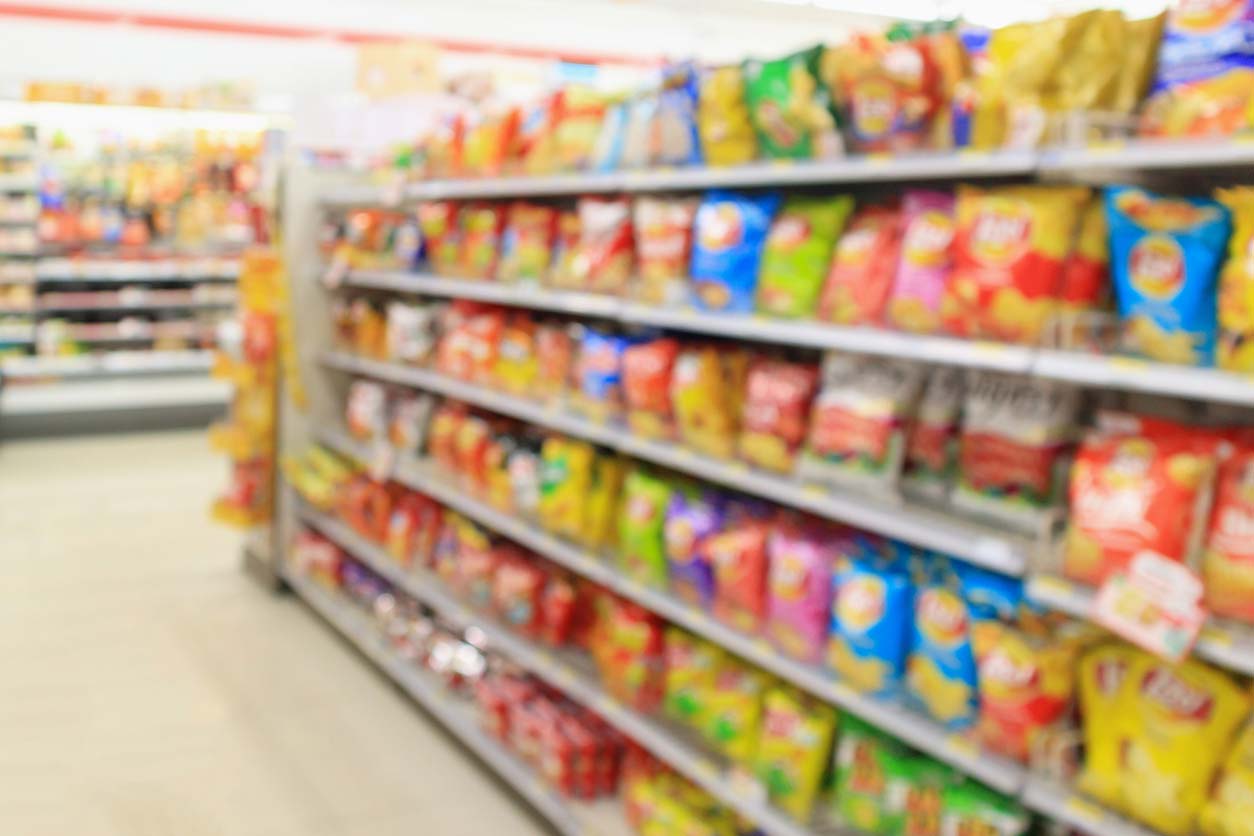
I’m no stranger to the allure of a good potato chip. When my twins were nine years old, the older one (by six minutes) was a potato chip fiend. When I brought out a bag of organic Kettle chips, I’d try to limit him to five chips. Instead, he’d grab 10 or 20, or rouse himself to full tantrum mode if I intervened. Sometimes, this ended with him in his room, door locked, as he consumed the entire bag in defiance.
At the supermarket, he’d maneuver us to aisle four and engage in a Defcon 5 meltdown if I refused to allow the bag into the cart.
When I turned to my wife for advice, she told me the one thing I didn’t want to hear. If I didn’t want to fight our son about potato chips, maybe I should stop bringing them into the house.
Like any addict, I went through a period of mental agony and soul-searching, and eventually admitted to myself that my wife was right; to help my son, I was going to have to help myself first. And that’s what I did. I stopped buying potato chips. And within a short while, the issue was resolved. No arguments. No negotiations. No tantrums. And miraculously, no more visits to aisle four.
But I admit it wasn’t easy for me. Which showed me what the Pringles researchers learned: crispy, crunchy (or “crinchy” as they’re sometimes referred to) foods can exert a powerful hold over us. And the food industry engineers the “crunch factor” in its products to trigger cravings and addictions to extremely unhealthy foods.
So what’s the deal? Why is crunchy food so appealing? And what are some crunchy, healthy alternatives to potato chips, Cheetos, pretzels, and other staples of the crunch-iverse?
Why Do We Crave Crunchy Food?
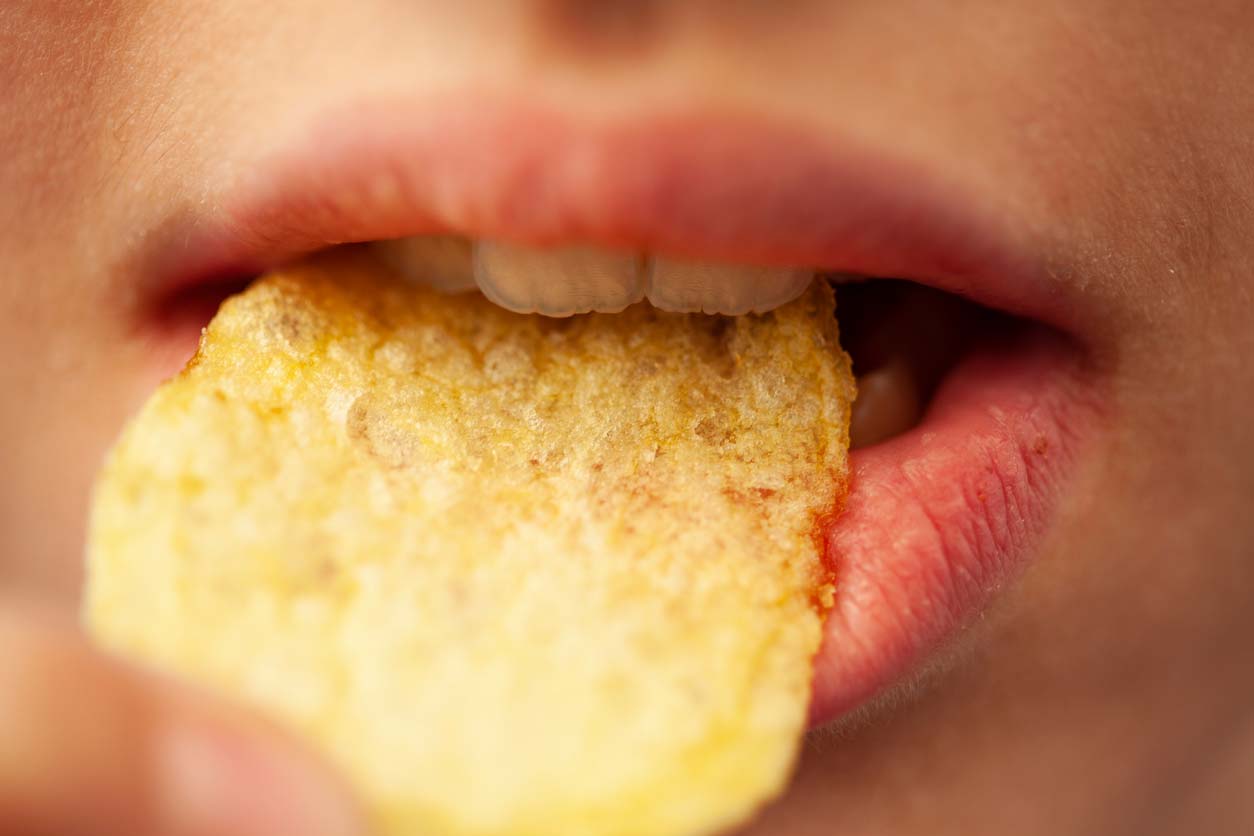
As I sat down to write this article, I looked at the title and instantly wanted to eat something crunchy. Given my breakup with potato chips, I opened the fridge’s crisper drawer and withdrew a firm, cold carrot, and took a satisfying bite. The pressure of my teeth against the root and the sound and satisfying violence of the bite confirmed to my evolutionary brain that I had found a healthy source of nutrition. Had the carrot been old and limp, that would have signified a root of lesser nutritional value.
Through much of our history, our species survived on fruits, vegetables, nuts, seeds, and probably insects as well. For all these foods, crispness is a reliable signifier of freshness and a better nutritional profile. And a likelihood that the food is free from harmful pathogens like molds and bacteria. So it makes sense that our brains still rely on crackle and crunch as shorthand for “good for us.”
We like foods with all different textures, of course. Variety is appealing in and of itself. But crunchy foods can provide a level of satisfaction that encompasses all our senses. The sound is a key part of our enjoyment, as that Pringles experiment demonstrated. Our language to describe such foods is also auditorily satisfying: “crunchy” and “crispy” are onomatopoeic words, sounding like what they describe.
Even outside of our mouths, sounds can attract us to foods. Think of the three Rice Krispies mascots, named for the noise the cereal makes when served with milk: Snap, Crackle, and Pop. (Wacky trivia tidbit I picked up while researching this article: the voice of Pop in TV and radio ads is currently performed by Tom Kenny, who was also the voice of SpongeBob SquarePants.) And those Frito-Lay scientists also figured out how the ideal bag of chips sounds when lifted off the shelf and placed in your shopping cart (especially when it’s not being drowned out by a tantrum!).
Our crunch cravings may even be psychological. Some Freudians go so far as to insist that crunching, along with the ripping and tearing required of meats and some meat substitutes, actually helps us sublimate our natural aggression and tempers our more violent impulses.
The Problem with Many Crunchy Snacks
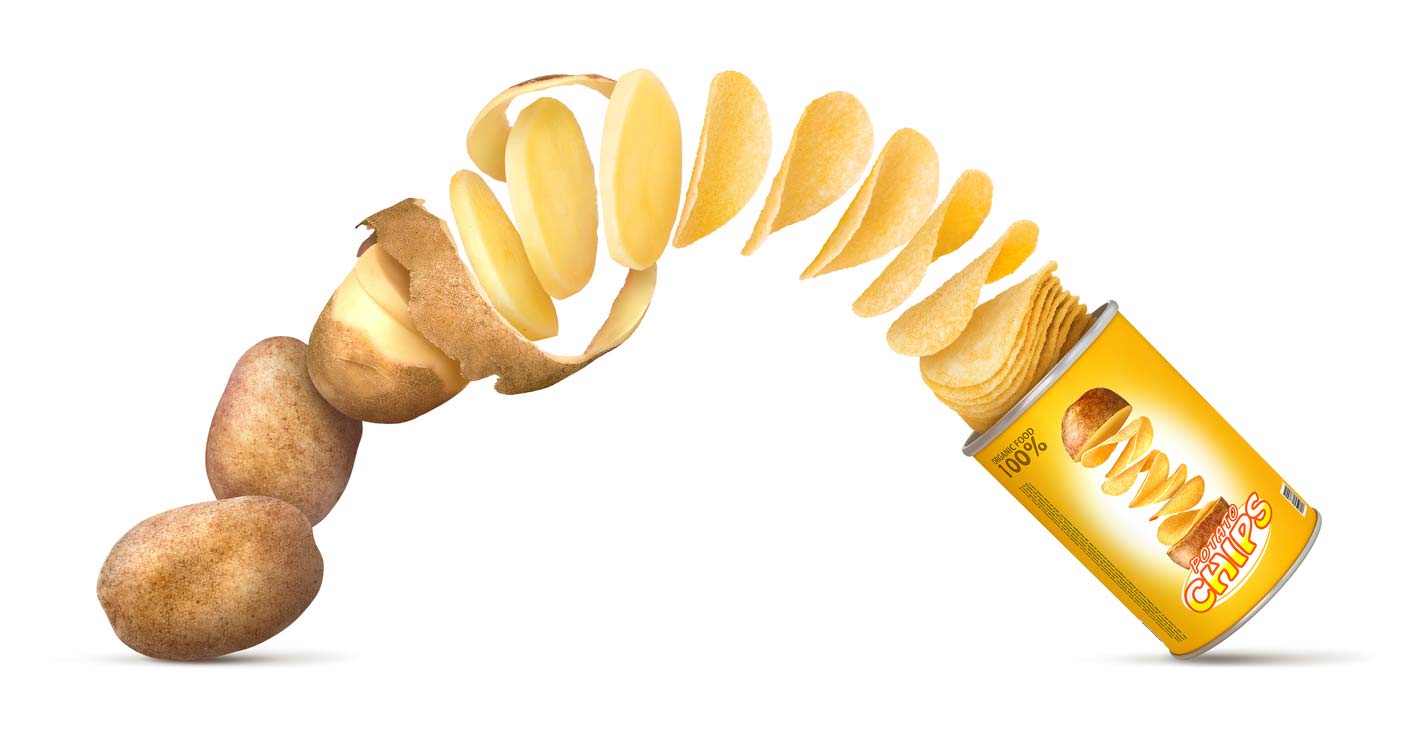
If crunchiness was a reliable signal of healthy food back in the day, in the modern world, it’s pretty much the opposite. Unlike our ancestors, most of our consumption of crispy foods is of the processed variety. Chips and other crisps are the most popular snacks in the US, followed by cheese, nuts, and cookies. In addition to potato chips, other biggies in the crunchy category include tortilla chips, pretzels, crackers, and puffs.
1. They’re highly processed.
Not to belabor the point, but these are not whole and fresh plant foods anymore. Most snacks like potato chips are highly processed, with pretty much all fiber removed. They’re loaded with excess sodium, unhealthy fats, flavorings, and sometimes added sugars.
2. They’re addictive.
In fact, they’re engineered to be addictive. We have an inherited preference for energy-rich foods since our ancestors who sought out and pigged out on foods high in sugar and fat were more likely to survive famines and thus pass their genes (and preferences) on to us.
In terms of addiction, puffed snacks like Cheetos may be the perfect storm. Not only are they calorically dense, but because they “melt” so quickly and completely in our mouths, our brains register them as non-caloric and don’t send out any satiety signals.
3. They’re high in inflammatory oils.
Most crunchy snacks are high in corn oil, soybean oil, or canola oil as well. These oils are used because they’re the cheapest; however, they’re often GMO, loaded with inflammatory omega-6 fatty acids, and vulnerable to oxidation and the production of free radicals in our bodies.
4. They’re high in refined sugar and flour.
Many crunchy snacks like cereals, cookies, and crackers are also high in refined sugars, like high fructose corn syrup, or sugar made from GMO beets. Add in refined flours, and these snacks hit our brains like a drug, generating powerful dopamine releases that keep us craving and addicted.
5. They’re high in sodium.
Excess sodium is another means of getting us addicted to crunchy foods. A little salt adds flavor, but the sodium content in many crunchy snacks is off the charts. A two-ounce bag of Cheetos contains 500 mg of sodium, which is about ⅓ of the American Heart Association’s recommended daily limit. Too much sodium is implicated in hypertension, obesity, type 2 diabetes, and many other conditions.
6. They’re full of additives.
Oh, and let’s not forget the additives that render these snacks shelf-stable for geologic timeframes. Preservatives, colorings, and other additives of questionable safety are turning many of our snacks into time capsules — if we can keep our hands off them, that is. Even so-called “natural” additives may never have been tested for safety, and there’s plenty of reason to suspect they may not be great for us.
And although many processed crunchy snacks are originally made with plant-based foods (mainly potatoes, corn, and wheat), they lose most of their nutritional value during processing. In general, the further a food product is from its natural form, the less it retains its healthful nutritional properties.
Manufacturers may try to “healthwash” their products by touting the nutrients returned to them via fortification and enrichment, but these processes add back only a small number of nutrients. And they certainly don’t make up for all the nutrition that’s been lost by hyper-processing.
7. Ingredients are often low-quality
To maximize profits, manufacturers will source the cheapest ingredients for their products — many of which are low in quality and nutritional value. Thanks to government food subsidies, the price of processed foods in the US has decreased by a whopping 20-30% over the last four decades. (An additional tragedy here is that millions of people who live in poverty and have access only to convenience store food in their “food deserts,” have come to depend on these cheap, unhealthy calories in order to survive.)
Healthy Foods That Are Crunchy
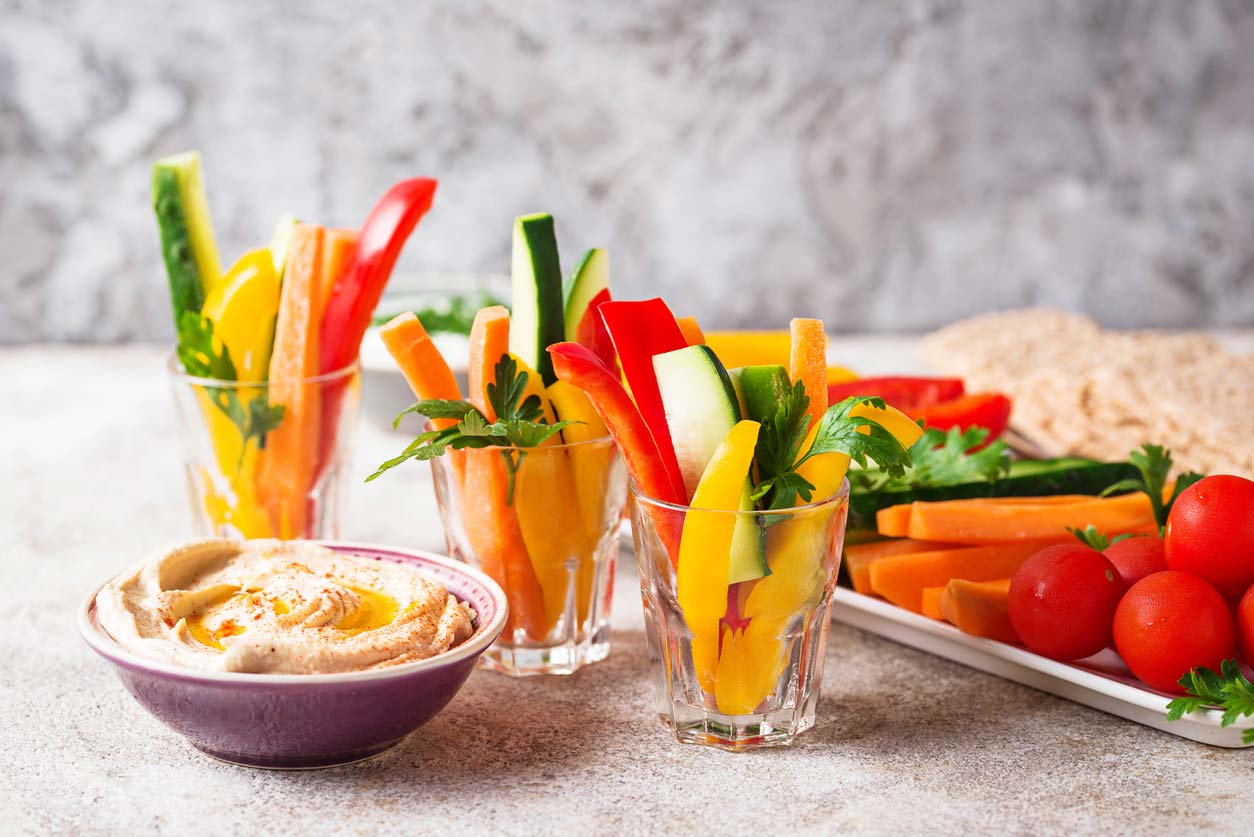
Remember the notion that we like crunchy foods because crunch once signified “good for us”? Well, there are still plenty of opportunities for healthy crunch in the modern world. Here’s a short list of raw and minimally processed foods to turn to when you need a snap, crackle, or crunch in your mouth:
- Apples
- Celery
- Carrots
- Jicama
- Peppers
- Cabbage & kimchi
- Brussels sprouts
- Broccoli
- Cauliflower
- Radishes
- Water Chestnuts
- Cucumbers & pickles
- Snap peas
- Nuts
- Seeds
- Popcorn (only healthy if you don’t put unhealthy things on it!)
- Rice Cakes
How to Make Crunchy Snacks
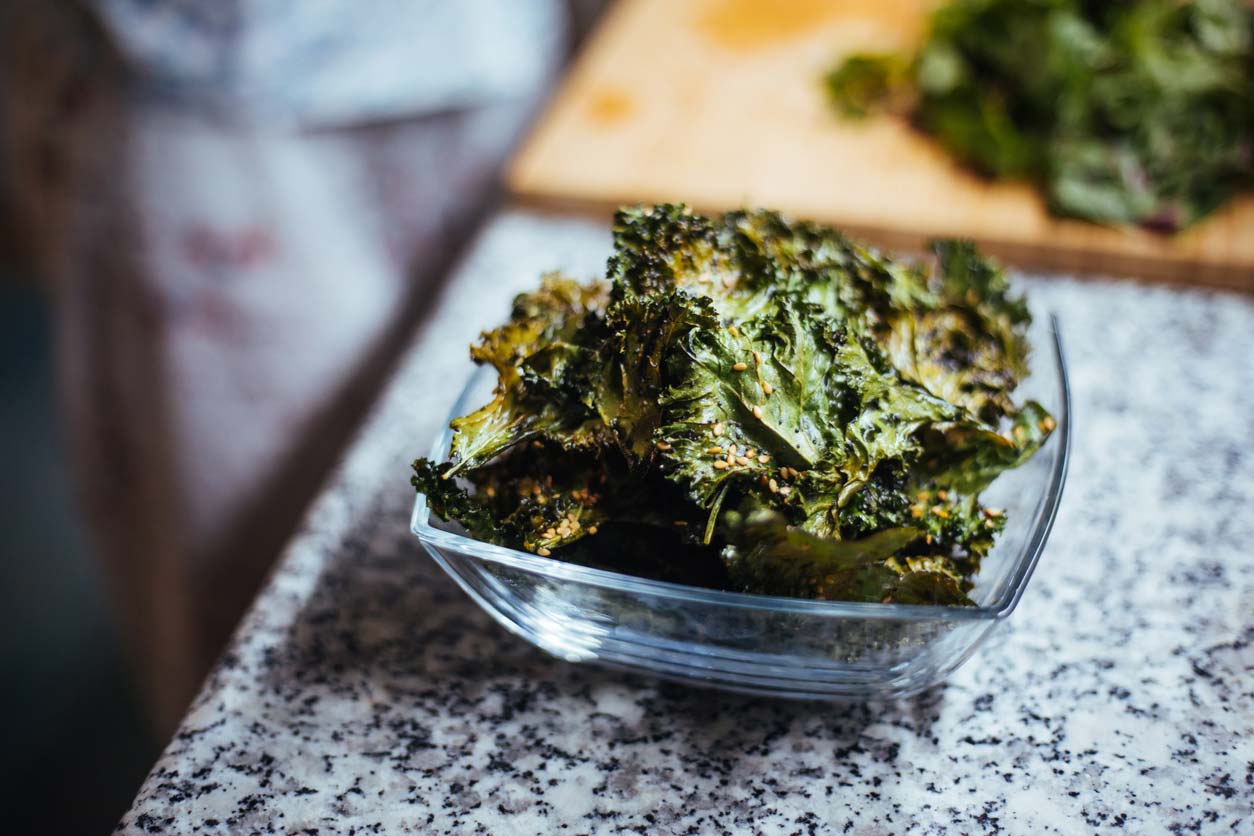
You can also “crunchify” some foods and snacks by how you cook them. Baking, roasting, broiling, and air-frying are common methods, although any heat that removes moisture without burning can do the trick.
To add flavor to your crunch, you can use spice mixes and seasonings. For example, bake kale and other veggies into chips in your oven without oil. Sprinkle garlic powder, smoked paprika, and/or nutritional yeast on top for an umami and cheesy taste.
You can also remove the water from fruits and vegetables by dehydrating them at low temperatures for a longer time, using your oven or a dedicated dehydrator (This is one of our favorites).
You can make your own crackers, too, giving you full control over the kinds and quality of ingredients: whole grain, nut flours, and high-quality oils (if you choose to use them at all), and zesty seasonings in place of excessive salt.
You may not think of cooked beans as crunchy, but it’s easy and quick and inexpensive to toss your chickpeas or white beans with spices and bake them until crispy. They make great snacks on their own, or as a mouth-pleasing addition to salads.
And if you’re a fan of crunchy breakfast cereals, without the processed ingredients, there’s always homemade granola, with dried oats, nuts, fruit, and seeds coated in a sweet date paste and baked until crunchy.
5 Recipes for Healthy Crunchy Snacks
Making crunchy snacks at home can be quick, tasty, and packed with nutrition. Start with the Moroccan Baked Chickpeas that are bursting with flavor. They’ll provide you with a satisfying crunch, and satisfy the belly with their protein and fiber.
If you like a little creamy along with your crunchy then look no further than The Best Creamy and Crunchy Snack. And for anyone who has a challenge consuming leafy greens on the daily, consider your challenge conquered when you try the Chili Lime Kale Chips.
Like a little sweetness with your crunch? Super Seedy Granola provides all that and more. And if you’re a fan of crackers, but not a fan of most store-bought cracker ingredient labels, then it’s time to try making crackers at home. It’s simpler than you may think, and they have all the flavor and none of the unhealthy ingredients found in many traditional cracker brands.
1. Moroccan Baked Chickpeas
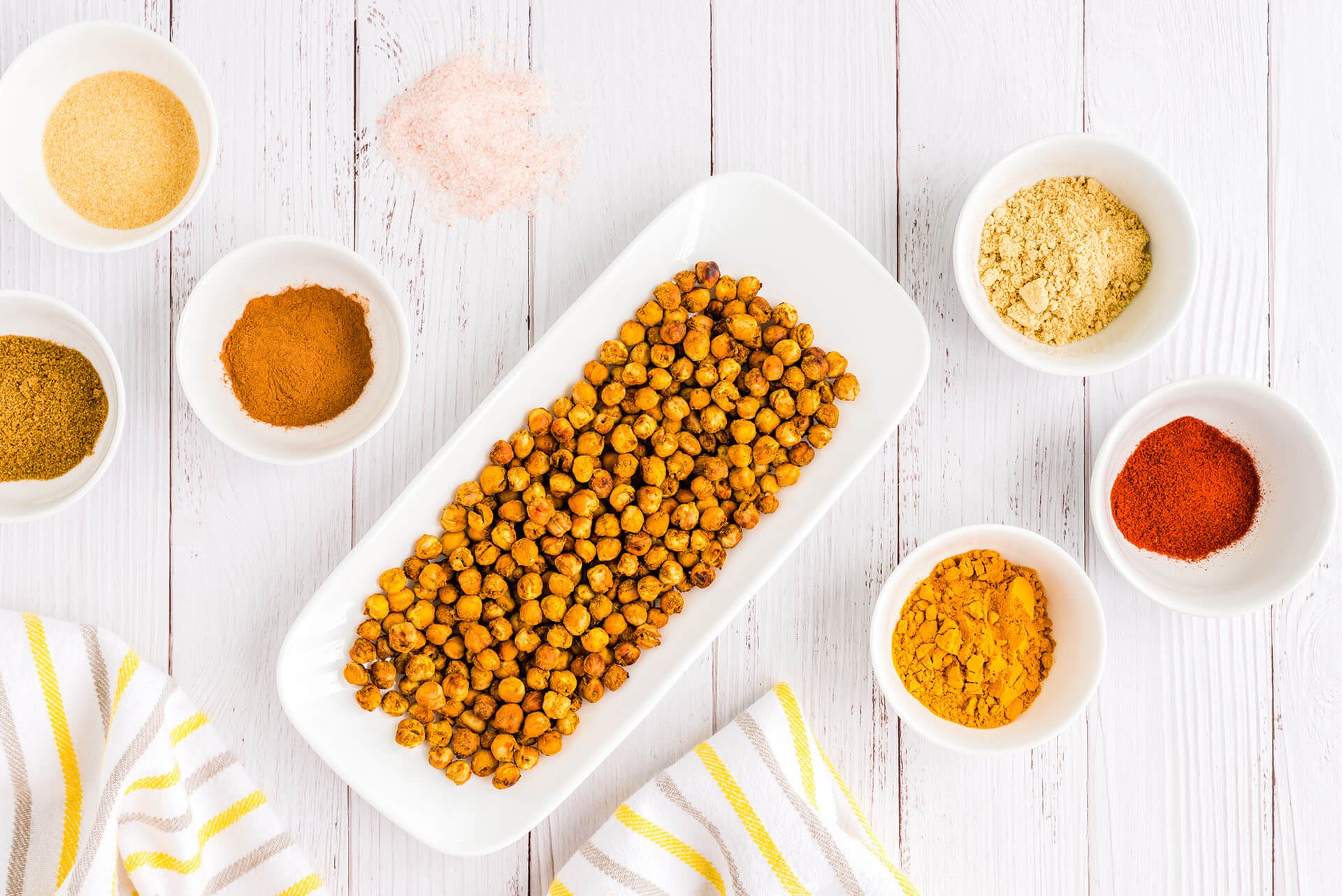
Looking for a high fiber, high (plant) protein nibble to replace those high fat, high salt chips? Chickpeas get perfectly crunchy in the oven (with a little tossing in between). All you have to do is add your favorite seasonings. This flavorful, Moroccan-style baked chickpea snack will get you going.
2. The Best Creamy and Crunchy Snack
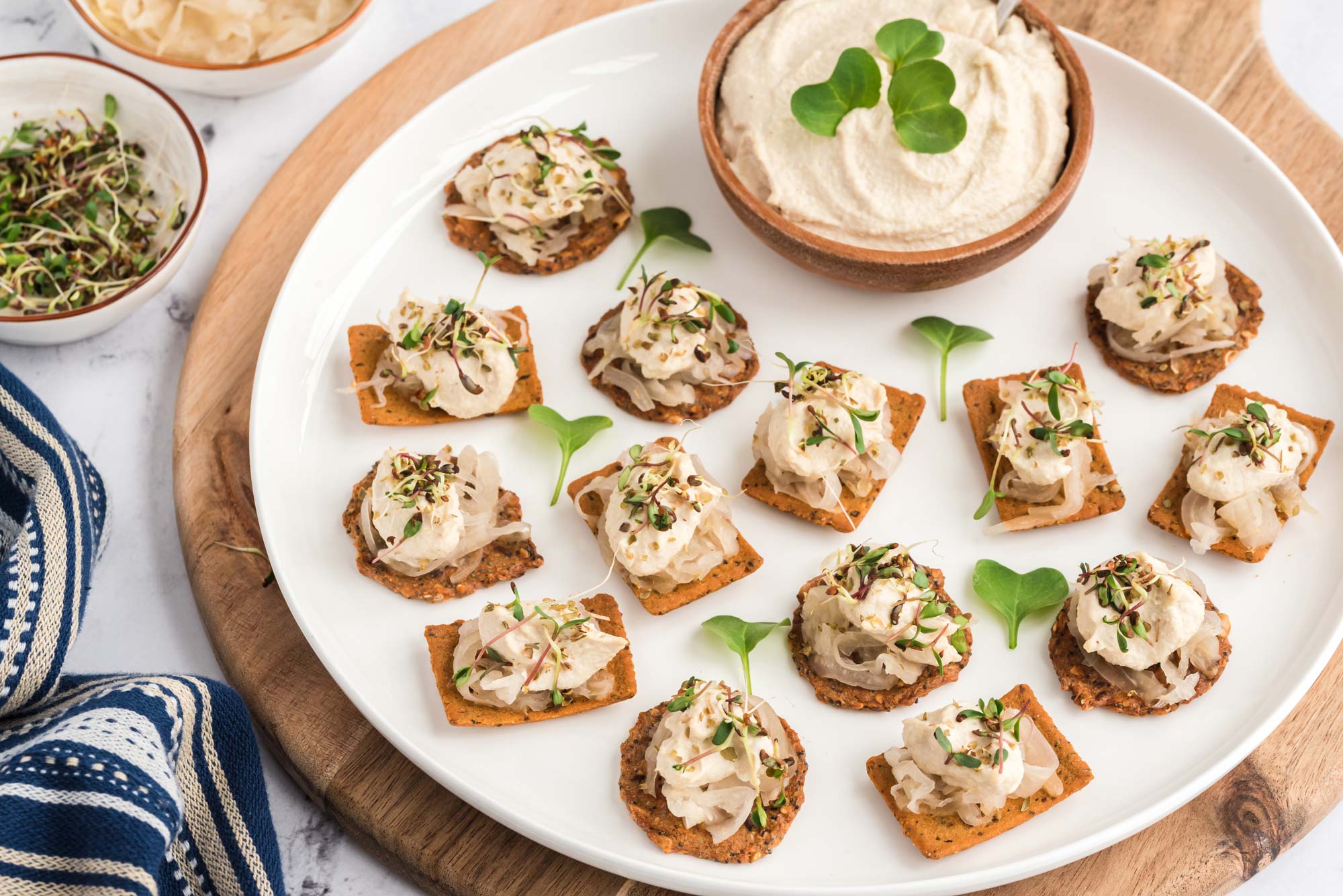
A big bonus comes with this snack as it satisfies both crunchy- and creamy-loving palates. It’s one of our favorite go-to snacks that literally makes us hum with happiness because of its flavor, texture, AND nutrition. You also get probiotic goodness with each bite, plus leafy greens and whole grains (or seeds, depending on the cracker) to boot!
3. Chili Lime Kale Chips

The snack that gives back with every bite — Chili Lime Kale Chips. Not only are these veggie chips satisfying with their light, crispy crunch, but they’re one of our favorite ways to get in our daily dose of leafy greens. Kale is truly a superfood that’s abundant in calcium, carotenoids, vitamin K, and fiber. Pro tip: Double the recipe if you’re sharing because these veggie chips disappear quickly!
4. Super Seedy Granola
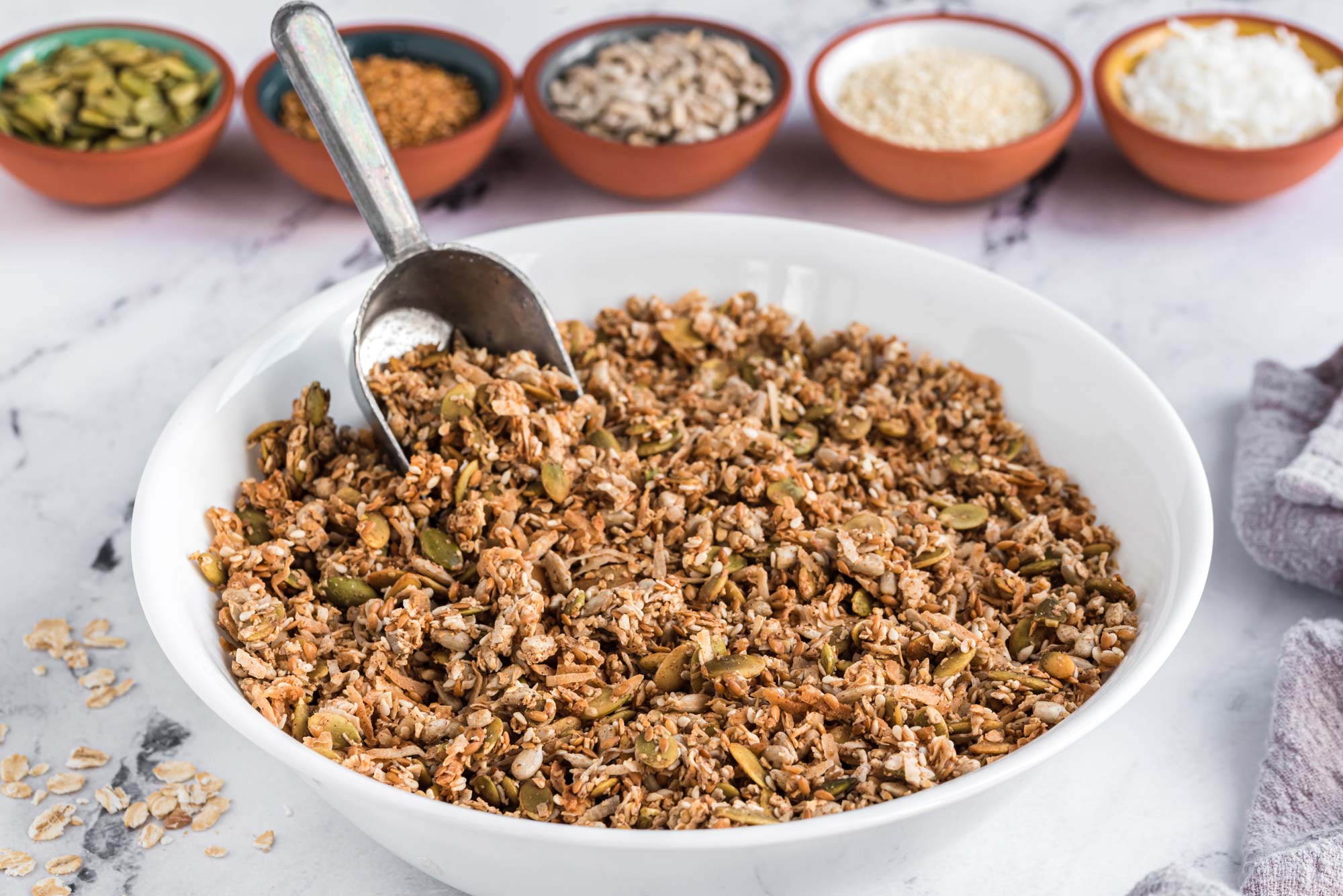
Are you a sweet and crunchy snacker? We hear you, and we’ve got you covered with this slightly sweet and seedy granola. While seeds are high in calories and may be similar in caloric content to conventional chips, the type of calories matters! With each bite, you’re getting plant-based protein, healthy fats, and lots of fiber.
5. Easy Cheesy Herbed Crackers

Where are the cracker lovers? Many store-bought brands have too much sodium, added oils, and are made with refined flours and sugar. Easy Cheesy Herbed Crackers are different! They provide the flavor and crunch you love, but are made with whole grain flour, healing spices, and phytonutrient-rich miso. We can’t wait for you to try them!
Get Crunching!

Crunchy snacks can be tasty and convenient. But most store-bought options can be addicting and loaded with concerning ingredients, and lack nutrition. You can still get a satisfying crunch and crispiness without the negative effects on your health by eating a variety of whole foods, either raw or in some cases by baking or other preparation methods. Next time that crunch craving hits, reach for one of these healthy, crunchy snacks.














































